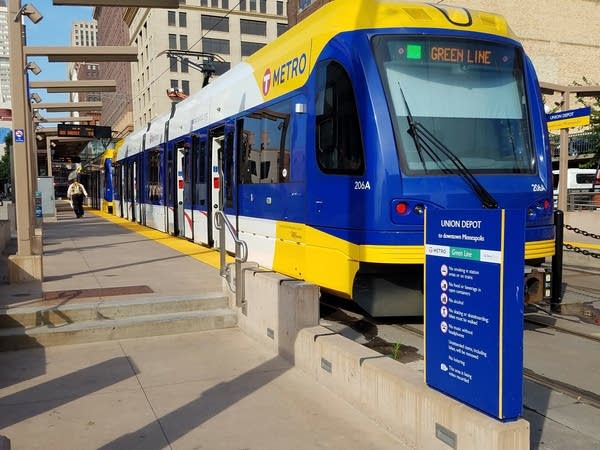Metro Transit police chief: Crimes reported on transit down

Metro Transit Police Chief John Harrington said Tuesday that serious crimes reported to police on buses and trains and around public transit stations are down but homeless numbers are up.
He added his department has been growing to address these issues, but it's still not enough.
Harrington made an hour-long presentation at the House Transportation Finance and Policy Committee in response to a data request made by Rep. Paul Torkelson, the committee chair. The presentation covered three topics related to public safety: crime statistics, the homeless population and community cooperation.
Create a More Connected Minnesota
MPR News is your trusted resource for the news you need. With your support, MPR News brings accessible, courageous journalism and authentic conversation to everyone - free of paywalls and barriers. Your gift makes a difference.
Read Harrington's full presentation:
Felonies averted, petty crimes exposed
Harrington briefed the Committee on crimes reported in his jurisdiction. The statistics, which are reported to the FBI, included serious crimes — murder, rape, robbery, aggravated assault, theft, auto theft, burglary and arson — and those considered lower-level offenses, like fraud, vagrancy as well as drug and alcohol violations.
The data showed that, compared to 2017, serious crimes from January to June decreased by six percent, while petty crimes increased by 13.6 percent over the same time period in 2018.
Harrington credited the changes to increased officer presence on buses and trains, which makes it easier to both spot small crimes and discourage big ones, he said.
"When we have officers on trains, we find that less than 1 percent of the people on the trains are violating our fare policy, and we see people get off," he said. "[When officers] get on in this uniform, the people who want to misbehave decide that the next stop was their stop."
Buses and trains become homeless shelters
Harrington said the increase in visibility and safety may have had an unintended consequence: Buses and trains in the Twin Cities have become shelters for homeless people.
"Metro Transit is the second largest homeless shelter facility in the Twin Cities area," Harrington said, citing research done by Hennepin County and St. Stephen's Human Services.
He said that on an average night between 180 to 250 homeless people made a bus or train a place to sleep. They tell police, he said, that they feel safe there.
"This is a dry and a sanitary place,'' Harrington said. "It is a place where they know that if they run into trouble, they know that help is on the way."
In response to the number of homeless people riding buses and trains, Harrington has started a homeless action team. The team is staffed by officers and outreach workers tasked with guiding the homeless to proper shelter.
Police not the only safety solution
Since its formation in 1994, the Metro Transit police department has grown from 60 to almost 200 officers. The department fields 115 full-time and 60 part-time officers, plus about 30 community service officers and administrative personnel.
Still, at the meeting on Tuesday, Harrington said that community needs are outpacing the department's growth.
"The issue is we cannot staff [shifts] 24/7, 365 days a year," he said.
In response, Harrington has turned to community organizations to help de-escalate conflicts. Those include Group Violence Intervention, the St. Paul Ambassadors and Mad Dads of Minneapolis. Metro When there's word of trouble, Transit police coordinate with these organizations to send out groups of volunteers, usually four to six at a time.
"When we have a report of disorderly youth, fights, narcotics usage, we will ask Mad Dads to go there and essentially act like grown-ups," he said. "They go in, they have a conversation with the kids, and they give them some good advice, say: 'This is not the time, this is not the place.'"